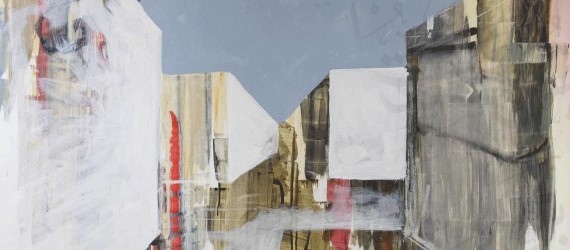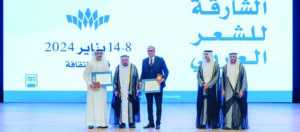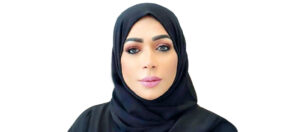Two prominent cultural figures in the UAE are launching a new platform to create a more “sustainable and ethical” art ecosystem. The scheme, named 101, has been specifically designed by Munira Al Sayegh and Gaith Abdulla to address many of the particularities of the UAE art scene, inspired by the pair’s embedded position within the country’s grassroots art community.
“Artists come out of university and are immediately gallery-represented,” explains Al Sayegh, an Abu Dhabi curator who has worked with Guggenheim Abu Dhabi, Art Dubai, UAE Unlimited and other regional platforms. “That creates an unbalance because you’re buying work from a fresh graduate whose body of work might not be finished.”
“It has a material negative effect on the artist’s practice,” adds Abdulla, a writer and researcher on Gulf affairs who lives in Dubai.
Prices are often set too high or erratically priced for young graduates, while mid-career artists can struggle to find representation and can be left out of the market.
To remedy this, Al Sayegh and Abdulla are eschewing the gallery model for a series of quarterly sales of artworks, mainly by emerging and mid-career artists. While galleries typically take a 50 per cent cut of the artist’s sale, they will split the proceeds 30 / 70, with the greater portion going to the artist.
“We are not into the gallery model where galleries take 50 per cent of the sale and their logic is they provide a vital function,” says Abdulla. “Some do, but others don’t do that much for the artist. It’s these ethical considerations that Munira and I really believe in and are focused on, and that we need to tackle for the sustainable and ethical future of our art ecosystem.”
 The UAE has invested heavily in art and culture over the past 15 years, and the scenes that have developed have specific weightings. Due to successful programmes at places such as Zayed University, the Salama bint Hamdan Al Nahyan Foundation and the American University of Sharjah, there is a strong cohort of young artists. But the venues for exhibition are largely government-led, particularly in Abu Dhabi, at times creating a disconnect between on-the-ground arts production and major events in the cultural calendar.
The UAE has invested heavily in art and culture over the past 15 years, and the scenes that have developed have specific weightings. Due to successful programmes at places such as Zayed University, the Salama bint Hamdan Al Nahyan Foundation and the American University of Sharjah, there is a strong cohort of young artists. But the venues for exhibition are largely government-led, particularly in Abu Dhabi, at times creating a disconnect between on-the-ground arts production and major events in the cultural calendar.
This is a disconnect which Al Sayegh in particular has been effective at navigating. For the past few iterations of Art Dubai, for example, she has used the platform Gulf Now at the fair to host young Khaleeji collectives.
With 101, she and Abdulla have looked holistically at the commercial sector to try and plug gaps in how the market is set up – including, perhaps most challengingly, the relative dearth of collectors. Despite concerted efforts on the part of Abu Dhabi Art and Art Dubai, and the number of high net-worth individuals in the UAE, a broadly engaged collector class for contemporary art has yet to develop.
“Art has only been targeted towards people who have a history of collecting or have the capacity to collect at the figures they’re selling, so a lot of people come in and think art is inaccessible,” says Al Sayegh.
With 101, the pair plan to offer art at a lower price point and have been targeting individuals – such as doctors and engineers – who traditionally have not been seen as a potential collector base.
“The idea is your average Joe can also collect and can also become interested in the artist if you open that door. People are checking price points and are curious, but even people with big budgets in the UAE steer away from contemporary art,” says Al Sayegh.
While galleries also target new collectors and aim for a range of artists, 101 is conceived as a series of sales rather than a gallery with a fixed stable and high overheads. Their first sale is now available for viewings at Abu Dhabi’s Bait 15.
Titled Outside in., Inside out., it offers 22 works from six artists, with most works around Dh2,500 to Dh4,000. They range in style and medium: from Aliyah Al Awadhi’s paintings of domestic interiors to Zuhoor Al Sayegh’s handwoven textiles, and from Almaha Jaralla’s geometric paintings of typical Gulf architecture to Afra Al Suwaidi’s organic cast plaster sculptures. All the artists shown live in the UAE. Mohammed Khalid, popularly known by his initials MK, shows his work interrogating identity, consumerism and Gulf narratives, and Filipino photographer Augustine Paredes, who lives in Dubai, offers work about beauty and where to find it.
“Studio visits are really important,” says Abdulla of the process of choosing work for the sale. “In the studio visits, Munira’s curatorial expertise allows us to engage with the artist’s process and to think of where they want to go with the work.”
The pair also stress the grassroots origins of the venture. A section on their website publishes research from Gulf academics alongside commissioned art writing, situating the work in a broader social context.
The sales are open to anyone by appointment, and they have chosen Bait 15 as their venue, which is run by a group of artists. “They’re our friends,” says Abdulla about the choice to site the sale at the studio and exhibition space. “We needed somewhere to show the work. They said, ‘we’ll do an exhibition for you guys’, and we took it from there.”
For more information about the sale, email contact@101.art or visit www.101.art
www.thenational.ae




